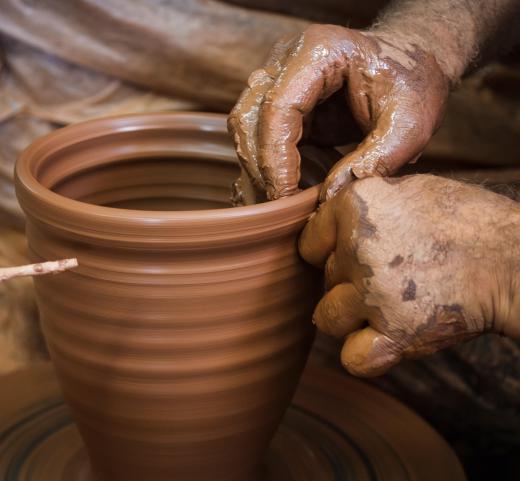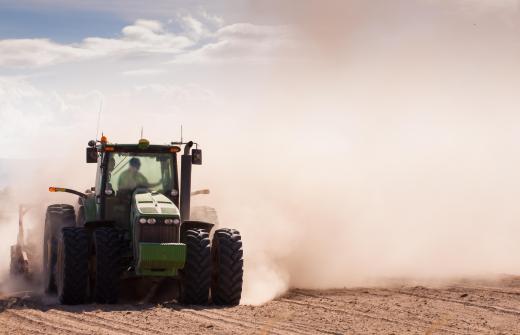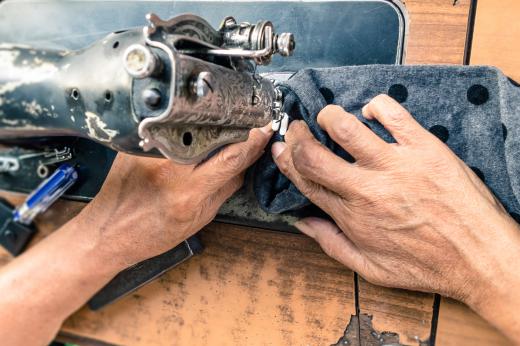A treadle is a type of lever or gear that uses an individual’s stepping action to create mechanical motion. Treadles are used in a variety of products such as sewing machines, blacksmith hammers, and water pumps. These machines typically do not use any electricity so they may be useful in developing nations around the world, or for environmentally-conscious individuals who choose to not use fossil fuels.
A treadle harnesses the kinetic, or motion, energy from the movement of the pedal or wheel. This is transferred into mechanical energy that turns a gear, pumps water, pounds a hammer, or powers a sewing machine. Often, users can regulate a machine’s speed simply by regulating the motion of their feet.

Treadles may take several different forms. They may involve foot pedals that a person forces down with either one or both feet. There are also wheels that an individual may kick into motion, such as the one on a standard pottery wheel. A third type of treadle is like the one on a manual-powered sewing machine, where the user’s feet rock a pedal back and forth over a center axle. Each of these systems turn gear shafts or drive wheels that, in turn, power the machines they are attached to.

One of the most commonly known treadle-powered machines is a manual sewing machine. Popular in the 1800s, these machines used a rocking pedal to power the needle motion. Most manual machines were replaced with electric ones in the 20th century, but many people still use them.
These antique machines are often popular among collectors, sewing enthusiasts, and environmentally-conscious crafters. Many people purchase them as collectibles, or to use as pieces of furniture, but many others actually use them for sewing. For the most part, treadle sewing machines have had a reputation of being reliable and long lasting. Some manufacturers still produce new manual sewing machines in addition to the electric ones.

Another type of treadle-powered machine is the treadle pump. These foot-powered pumps typically draw water from underground wells. They are most often used in farming and crop irrigation. The pumps are usually simple, both to construct and to operate, using little or no electricity to run. As a result, non-governmental organizations and charity groups often work to install these water pumps in underprivileged areas of the world to help farmers irrigate crops.
A third common type of foot-powered machine is the treadle hammer, often used by blacksmiths to pound heated metal into shapes. These hammers typically provide consistent force for this process. Usually, the foot pedal is pumped by the blacksmith, and the energy is transferred to a gear that forces the straight hammer up and down.
